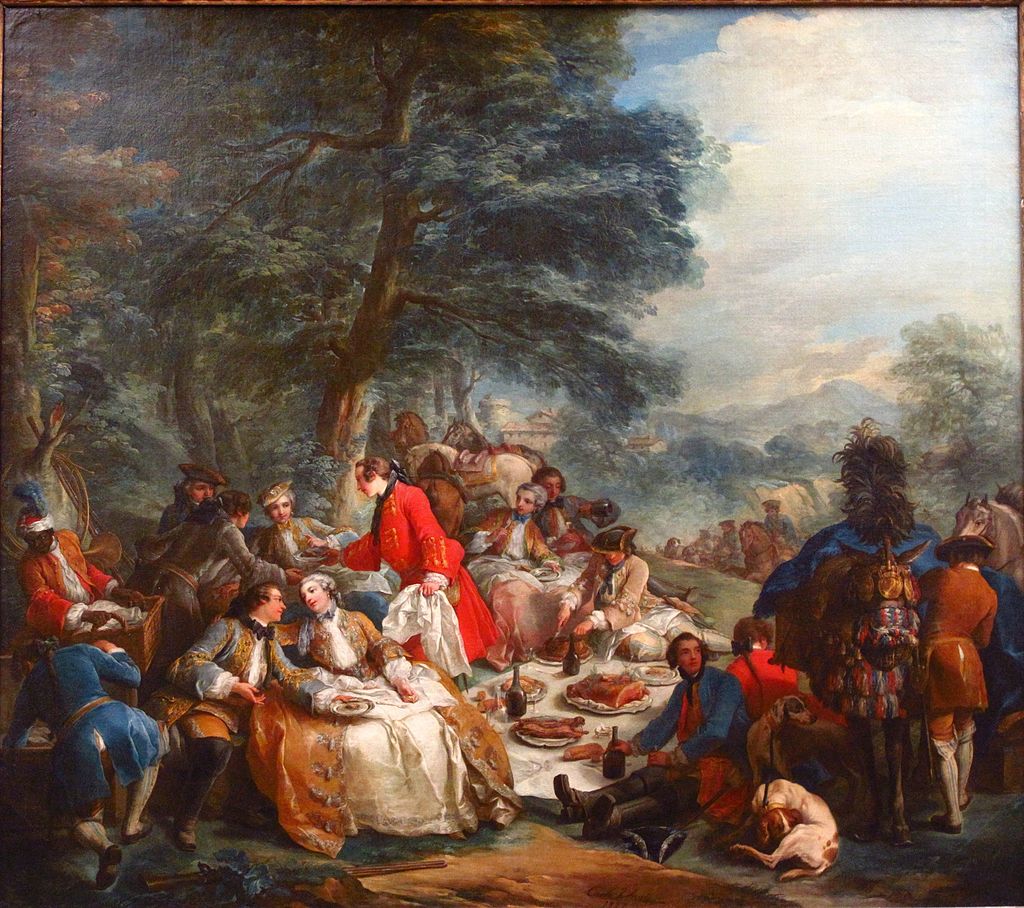As usual among the French, a halt on the hunt is never referred to as a picnic, although that’s what it is. Van Loo’s Halte de chasse is a narrative of a stop during the hunt, at which the ladies meet the hunters at a predetermined place, called a tryst, for lunch. The meal, always alfresco, is a rustic affectation of the aristocracy, who can afford to bring prepared foods to servants in the field. The painting was installed in Kings Louis XV’s private dining room at his main château in Fontainebleau.
The principal couple (left foreground) is elegantly costumed. The man’s embroidered clothing contrasts with the more practical hunting attire of the other men, mainly the hunter seated on the ground (left foreground). The master of the hunt, dressed in red (center mid-ground), seems intent on hosting the diners. The servants are in various costumes, particularly the African in the red coat and feathered turban. The white cloth signifies wealth, as is the food: roast fowl (probably chicken), roast beef, roast rabbit, bread, and wine.
Featured Image: Carle Andre van Loo. Halte de chasse [The Picnic after the Hunt] (1737), oil on canvas. Paris: Musée de Louvre.

